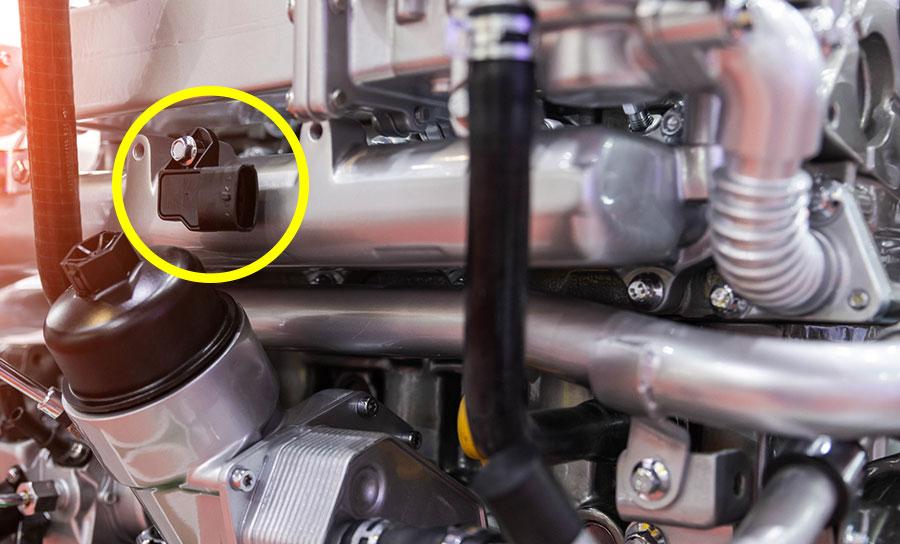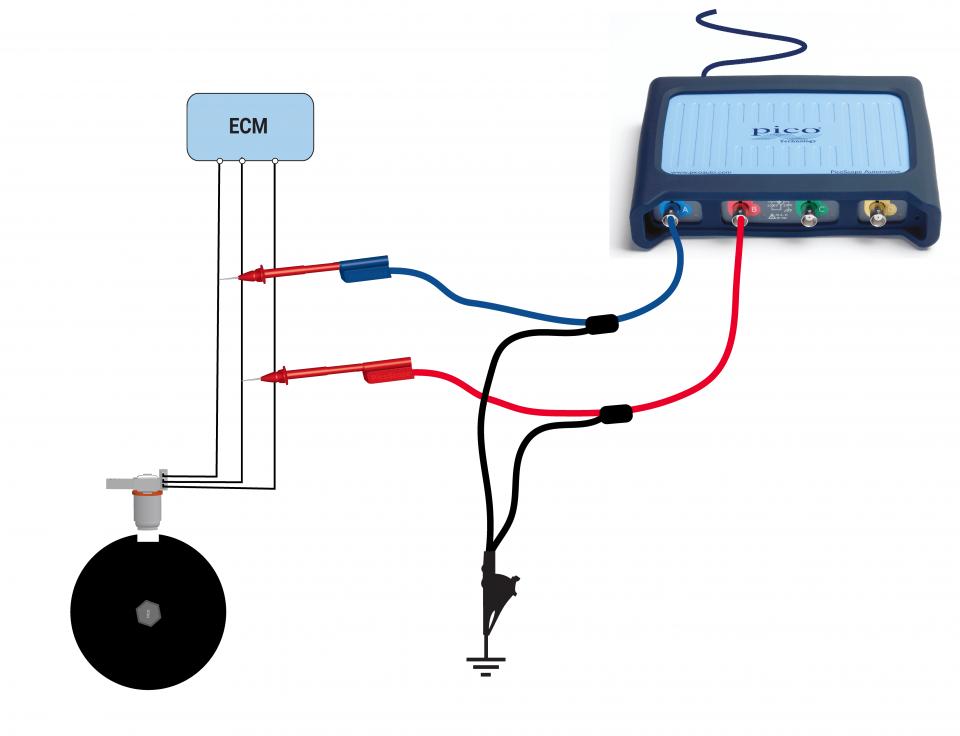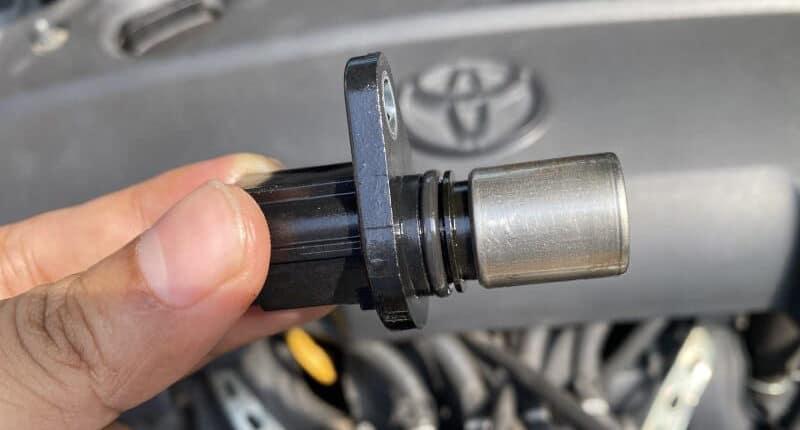A car has a variety of electrical components, one of which is called a camshaft position sensor (CMP). This section will discuss this component, the signs that indicate a problematic camshaft position sensor , and the procedures for doing so.
Catalog
What precisely is position sensor?
The function of the Camshaft position sensor
Where is the camshaft position sensor located?
Types of the Camshaft position sensor
What causes the Camshaft sensor to fail?
How to test a Camshaft position sensor?
How to reset the camshaft position sensor?
What precisely is position sensor?
Every single contemporary car has something called a camshaft position sensor. Because it verifies that the automobile's engine is functioning correctly, this sensor is an essential component of every automobile.
When searching for the sensor under your vehicle's hood, you need help locating it. Near the engine, the sensor will often be positioned in a manner exclusive to the particular automobile manufacturer.
It is possible to discover it either behind the cylinder charge, in the lifter valley of the car, or next to the engine block.
The function of the Camshaft position sensor
Let's look at an example to help illustrate how the camshaft position sensor works so that you can better grasp its purpose. When an internal combustion engine is started, the camshaft is responsible for opening the engine valve.
This makes it possible for the engine control module to direct air and fuel into the combustion chamber. After that, each valve was closed in preparation for the piston to begin compressing the air and fuel.
When the piston reaches its highest point, the engine control module sends a directive to ignite the combustion process to drive the piston down, producing power. At this point, the exhaust valves are opened by the camshaft, and the piston is permitted to make it to its original position, releasing exhaust gases from the exhaust manifold.
Combustion also occurs in an engine thanks to camshaft position sensors and other components.
Where is the camshaft position sensor located?

The precise positioning of the camshafts inside the engine is determined by the particular brand, model, and configuration of the machine. However, it will be situated in the vicinity of the camshaft somehow.
You'll often find the camshaft position sensor near the front side of the engine or on the top. This may be found on the top of the cylinder block, on either end of the intake manifold, and often in the vicinity of the timing cover.
There are several instances where the camshaft sensor will be located behind the timing cover. When looking for something simple and uncomplicated to do, take off the surface of that engine, and you will find that it is situated directly on the rear of the machine.
Types of the Camshaft position sensor
Three primary varieties of Camshaft position sensors are:
- Magnetic type sensor
- A.C. output sensor
- Hall Effect sensor
Magnetic type sensor

It is possible to identify the magnetic camshaft position sensor with two wires. This produces its voltage, which consists of alternating current sine waves. It can be situated either inside the distributor or on the camshaft.
Because it is near the camshaft, which has a device with a permanent magnet connected to it, the magnetic field of interest causes a pulse to be generated, which is then sent to the ECM for analysis each time the appeal travels past the sensor.
A.C. output sensor

There are specialized varieties of camshaft position sensors, and one of their outputs is an alternating current voltage signal. A very high frequency, anywhere from 150 to 2500 cycles, is produced by the ECM and sent to the exciter coil, situated close to the revolving disc.
This disc has a space in it and is positioned at the end of the camshaft so that it may rotate. Mutual induction causes the coil to get excited when distance travels through the loop. This causes the Electronic Control Module to receive a signal indicating the first cylinder's location.
Hall Effect Sensor

However, the camshaft sensor we're talking about here has three wires. The first wire supplies the device with its reference power, the second provides the machine with its ground, and the third conveys the signal voltage to the computer.
There are two other locations for the Hall Effect sensor: within the distributor and on the camshaft. It is equipped with a screen that has a slot in it as well as a magnet that is installed on the shaft.
The sensor is switched on and off whenever the screen moves in front of or behind the interest attached to it. As long as there is a continuous screen layer in front of the sensor, the feedback voltage will be disrupted even if the magnetic field is splitting.
Symptoms of a position sensor

The pursuing is a list of the most frequent symptoms that might be seen:
- Check engine light
- Stalled engine
- The automobile is unable to start
- Rough idle
- Reduced power from the engine
- Poor fuel efficiency
- Car shaking
When your car appears ineffective ignition, starting difficulties, idling instability, no refueling, engine weakness, increased fuel consumption, car shaking, engine lights continue to illuminate, car heat suddenly stalled, driving frustration, engine wear and acceleration and other problems, it is not unexpected that the engine camshaft position sensor has failed. Any one of these symptoms could show up alone or in combination. In most instances, the check engine light will come on concurrently with the manifestation of one or more symptoms. The following paragraph will explain each of the stated symptoms.
Check engine light

The "check engine" light's illumination indicates that a faulty camshaft position sensor is almost always present. When the light finally turns on, it will likely need to be evident what the issue is.
Using an OBD2 scanner to check your vehicle for any problem codes, you may better understand the situation. You should bring your car to restoration if you need access to an OBD2 scanner.
If the engine light comes on, you should avoid driving the vehicle, as this usually means that multiple sensors, including the camshaft sensor, have failed, at which point a detailed inspection is required. If you continue driving with the engine light on, you may cause more damage.
Suppose you are aware of the reason why the check engine light is on. In that case, you may be permitted to drive the vehicle to the repair shop if you have received permission from a certified professional technician or someone with equivalent expertise.
ALSO READ: Why is my engine light blinking and how to fix it?
Stalled engine
The engine cutting off is a more dangerous indication, although happily, it occurs less often. Whether parked or moving down the road, you risk something happening to you. The second possibility may result in severe consequences.
If you suddenly find that your engine won't start, you shouldn't drive the vehicle. When the camshaft sensor fails, the ECU is unable to detect the position changes of the camshaft. At this time, the engine's intake and exhaust systems cannot function properly. Under such circumstances, the car will experience a lack of power during acceleration and may even stall, posing a serious safety hazard.
The automobile is unable to start
These symptoms are related to the previous ones. Due to the malfunction of the sensor, when the camshaft sensor fails, the ignition sequence becomes disordered, making it very difficult to start the engine.
There is a wide range of potential explanations for this symptom, just as there is for almost every other ailment. The inability of a vehicle to start might also be caused by a defective starter, a clogged fuel filter, a dead battery, or one of many other potential issues.
Rough idle
When everything is functioning as it should, a good and steady idle speed will not draw the driver's attention for the most part. On the other hand, if the idle is choppy, it will be pretty obvious when you are behind the wheel.
Unsynchronized combustion in the cylinders is the root cause of a rough idle, which indicates a problem with the camshaft position sensor. A malfunctioning fuel pump or EGR valve are two more potential causes of a rough idle.
No matter the source, it is essential to understand what results in the harsh idle. Finding out may involve the use of specific additional tools as well as some experimentation.
Reduced power from the engine
There are two different manifestations of decreased engine power. Either the "limp mode" is to blame for the reduced power as a safety measure, or there is no warning or light shown on the dashboard, and the vehicle travels erratically.
Your vehicle's engine will have less power when accelerating, or it could run slower while you're coasting or idling. It is also possible for it to manifest itself as vibrations while the vehicle is speeding. The poor combustion and misfires that are taking place in the cylinders of the engine are to blame for all of this.
Poor fuel efficiency
Due to the camshaft sensor providing incorrect information to the engine control unit, an unexpected amount of gasoline may be delivered to the combustion chamber, leading to disordered fuel injection by the computer, resulting in increased fuel consumption, stalling, and inability to reach desired RPMs, thereby increasing the fuel consumption of the vehicle.
This will result in more fuel not being burned, resulting in a poor gas economy. Because it takes place over a protracted period, this symptom may be more challenging to detect. You will also need to be informed of the typical mileage that your automobile gets on a gallon of petrol.
Abnormal car shaking
During driving, if the car trembles or shakes abnormally, it may be a sign that the camshaft sensor is faulty. The main role of the camshaft sensor is to monitor the working state of the engine, so if the vehicle jitter while driving, it may mean that the sensor is faulty, which will cause the engine to run unsmoothly.
What causes the Camshaft sensor to fail?
The camshaft position sensor plays an important role in the automobile engine. Once the camshaft position sensor fails, the stable operation of the engine will be adversely affected. Here are some common factors that can cause damage to camshaft position sensors:
- Impurities such as sludge and dust enter the sensor, resulting in poor contact or short circuit of the internal circuit.
- Improper installation of the sensor or too tight fixing screws may interfere with the normal operation of the sensor, and then affect the ignition and fuel injection of the generator.
- Quality problems of the sensor itself, such as defects in the manufacturing process, or unqualified materials used. In this case, the ECU may not be able to accurately pick up problems with sensor feedback, which can affect engine performance.
- The engine works with high load for a long time or fails, such as excessive valve clearance, camshaft wear, etc., which may affect the normal operation of the camshaft sensor.
- The vehicle use environment is harsh, such as dusty, wet and other areas, which may lead to premature aging and damage of the sensor.
How to test a Camshaft position sensor?
- First, use the handbook with your car repair kit to locate the power, ground, and signal wires. After that, put the sensor circuit through its paces by using the "DC volts" mode on your multimeter.
- Ask your assistant to rotate the key in the ignition to the on place, but instruct them not to start the engine.
- Your meter's ground should be touched with the black probe, and the other investigation should be connected to the power line. Check the reading you got against the requirements listed in the handbook.
- Request that your assistant turns the crank or starts the engine.
- Make contact with the ground wire using the black probe on your meter and the signal wire using the red search on your meter. Check your reading against the specification in the handbook that came with your car repair. The sensor is almost defective if the voltage signal is lower than the standard. If the sensor does not provide any indication, it is quite probable that the sensor is faulty.
- Take out the sensor and look it over carefully for any indications of physical damage or contamination.
If you cannot identify any issues with the Camshaft Position Sensor or the circuit, it is a part of it. You're likely experiencing an intermittent failure or a failure in a component that's connected to this issue. You may, for instance, have a timing belt or tensioner that has become brittle or overstretched due to excessive use.
How to reset the camshaft position sensor?
It is impossible to feel resentment against a camshaft position sensor for an internal engine since it functions similarly to a magnet by turning on and off as the camshaft rotates. You can substitute it, though.
A camshaft position sensor is operated by having a draw turn the sensor on or off whenever a camshaft is in the vicinity. The camshaft sensor will progressively fit when this activity has been completed before you begin the operation; double-check that the camshaft position sensor is installed correctly.
The camshaft works by determining the position of the camshaft and transmitting that information to the ECU, which then uses it to determine how to proceed with the fuel and combustion processes.
The engine's electronic circuit unit can know the position of the camshaft at any given moment, thanks to a camshaft position sensor. As a result, it can determine the part of the valves and the actions that will follow.
The movement of a camshaft affects the location of fuel and exhaust valves; by synchronizing the timing, fuel is distributed to the cylinders and ignited at the appropriate moment.
Conclusion
A camshaft position sensor monitors the rotation of the camshaft, paying particular attention to the times when the valves open and shut. Most camshaft sensors are positioned directly above the notched ring found on the camshaft.
The vast majority of camshaft sensors will use a magnet to generate or alter an alternating current electrical signal. This signal will be used with a crankshaft position sensor to determine when a position on the compression stroke is getting closer and closer to the top dead center.







